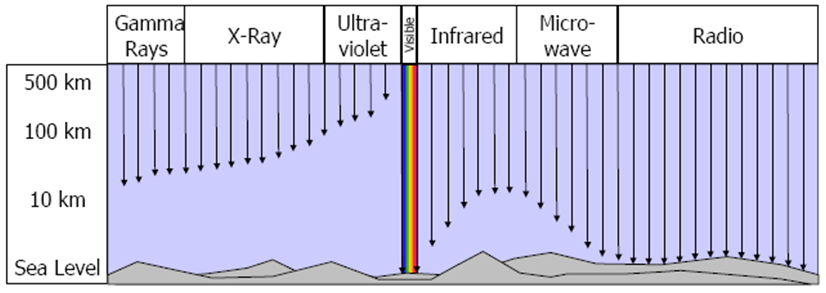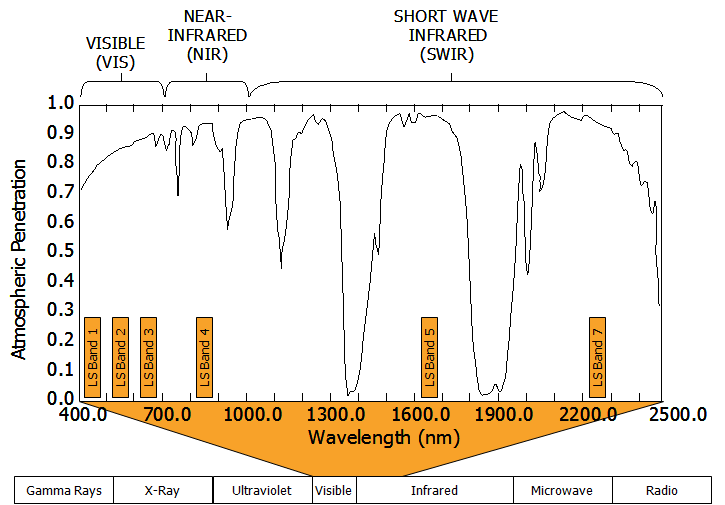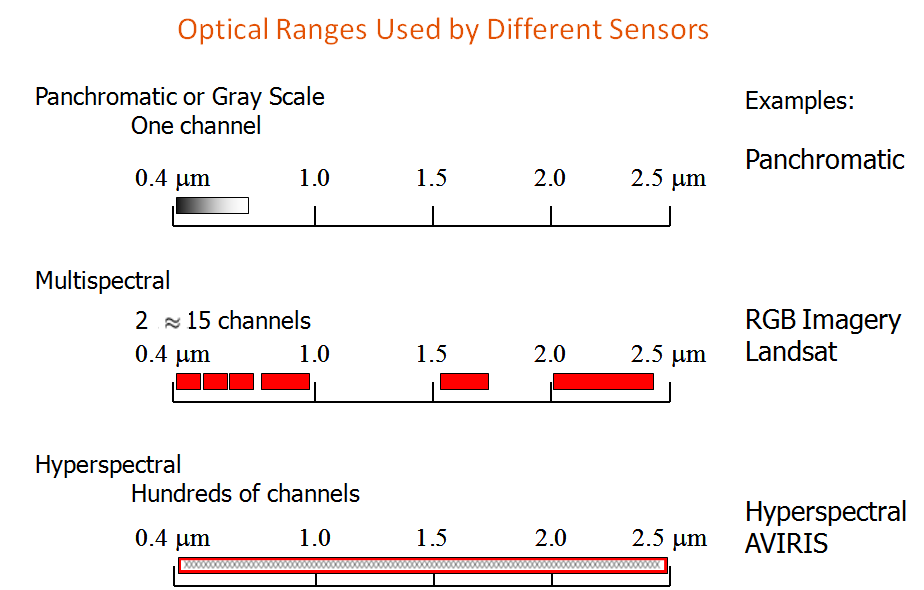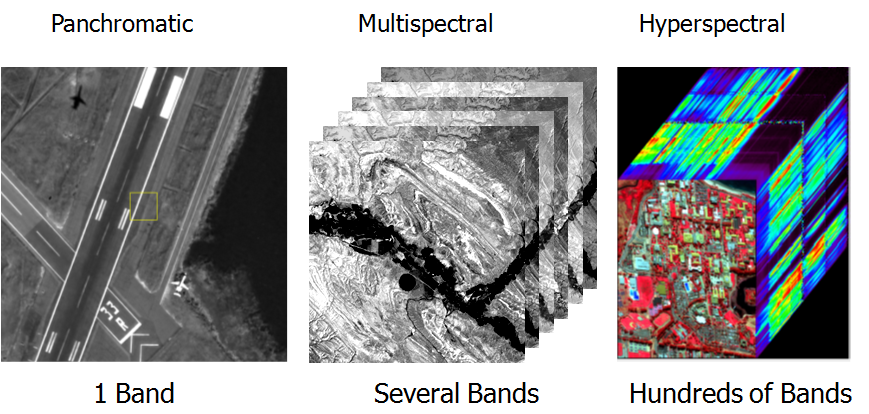Atmospheric Windows and Optical Sensors
The wavelength and frequency of light determines how far it can penetrate into the Earth's atmosphere.

- High frequency (gamma/x-rays) are mostly blocked by the atmosphere
- Visible wavelengths are able to penetrate to the Earth's surface with little atmospheric interaction.
- High-frequency (shorter-wavelength) infrared penetrate to the Earth's surface while longer wavelengths infrared and microwave frequencies do not.
- Radio wavelengths have little interaction with the atmosphere and easily penetrate to the surface.
Optical remote sensing occurs in the wavelength ranges between 400-2500 nm. This is because many wavelengths within the visible and infrared portions of the electromagnetic spectrum penetrate the Earth's atmosphere where they can interact with the Earth's surface and reflect light back to the sensor. These regions are ideal for conducting remote sensing and are referred to as atmospheric windows.
Even within these ideal ranges, certain wavelengths of light are absorbed by atmospheric gases and water to create wavelength ranges where little incoming radiation makes it to the surface.

When designing an optical remote sensing instrument, it is important to create a sensor that will detect reflected light in the specific regions where atmospheric windows occur.
The diagram below shows the spectral regions where some common sensors are designed to work.

- A high-resolution panchromatic instrument (such as that from QuickBird) will capture a single, wide band that spans most of the visible and some of the near infrared (NIR) portion of the spectrum.
- A multispectral instrument, such as Landsat, will have several sensors that work in more narrow regions of the visible spectrum so that it can capture the blue, green, and red bands separately. They often will have additional bands in the NIR and SWIR where atmospheric windows occur. These portions of the spectrum can provide unique information that cannot be seen in the visible portion of the spectrum.
- A hyperspectral instrument, such as AVIRIS, will have many sensors that work in very narrow, contiguous ranges. This captures the maximum amount of information from a reflected surface. Some bands may encompass areas of low atmospheric penetration and thus provide limited information about the surface in these spectral regions.
Examples of Data from Different Optical Sensors

Reviewed 8/25/2014 MM